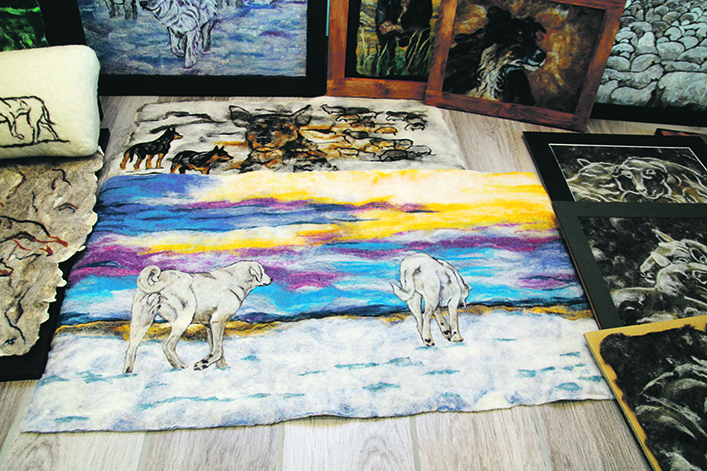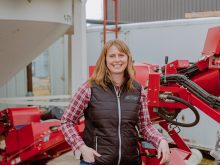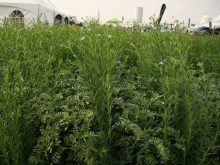Saskatchewan produces plenty of different fibres, including fibre from sheep, alpaca, flax and hemp.
Yet the market for locally grown natural fibres has remained small.
Now, the Prairie Fibreshed Network wants to change that by connecting producers and consumers and spreading the news about locally made fibres, said Sonja Welford, Prairie Fibreshed’s treasurer and a wool sheep producer.
“It’s not only selling products to people that want to buy, it’s raising awareness to the public and to the producers and end users.
“I’m making this kind of my mission to make people aware of the value of natural fibres in Saskatchewan to producers.”
In 2019, the All-Canada Classic and Grasslands Sheep Exhibition was held in Humboldt, Sask. It included a fleece competition.
Following the success of that event, a committee was formed to organize a fibre fair, but the event was cancelled by COVID-19.
However, the seven committee members weren’t ready to give up. They carried on the promotion work and created Prairie Fibreshed Network Inc.
Brooke Aitkins was named president and Alvin Ulrich assumed the role of plant fibre consultant. With help from others in the sector, they created a community in early 2022 to promote fibres.
“Fibreshed itself was started in California, and now there are affiliates all around the world,” said Aitkins.
“It’s about boosting the economy, using what you have, sourcing things that are close to you that have a much lower carbon footprint. Using natural fibres is way better for the environment in so many different ways.”
The community has two membership options: one for people wanting to support the cause and another for producers and users.
“We’re still very new,” said Aitkins. “I think we’re up to 90 members now, but we’re just trying to get the word out because we know there are people out there that would love to be members, but they don’t know.”
The group is in charge of the fleece competition at the All-Canada Classic sheep show in Humboldt. They set up shop, carry out judging and educate others on fleece quality and proper practice.
Sheep and alpaca wool and fleece are the best known and most commonly produced fibres. Welford raises Cotswold sheep and eight alpacas on her farm near Ruddell, Sask.
“At first, it was a little difficult, but now I’ve got a couple of ladies that come to me every year and say, ‘I want this fleece,’ because they want to use it for weaving with wool,” she said.
Each breed of sheep has different wools with different strengths and textures, so the user’s wool choice depends on what they plan to use it for. Welford’s Cotswold wool isn’t very fine, but she said it has strength.
Welford has seen interest in wool and fleece animals grow, sparked by shows like the one in Humboldt.
“Producers who were showing the sheep in the ring there, come over to the fibre side and say ‘oh, I had no idea,’ and they’re mesmerized,” she said. “The more people you have involved, the more help you get, the more the word gets around.”

The group holds wool-grading workshops and workshops with flax and hemp fibre, which is Ulrich’s specialty. He most often works with flax fibre.
“Linen is the fibre, the fabric for flax,” said Ulrich. “It’s been around for thousands and thousands of years. I’ve worked with hemp as well and we’ve also done a few trials with things like wheat, but mostly flax.”
As the president of Biolin Research Inc., Ulrich has promoted flax straw and other fibres for the last decade.
“Especially in the wetter areas of the province, we can get pretty good yields, similar to what they get in Europe,” he said. “We can get very good quality if we do what they do…. When people say, ‘you can’t grow it here, you can’t do this, you can’t do that,’ have you tried?
“Well, I have tried and I’ve tried a lot of things. There are combinations that work really, really well here. There’s a lot of economic potential for farmers and for adding value. So having a fibreshed, you start having like-minded people think about fibres as an opportunity.”















